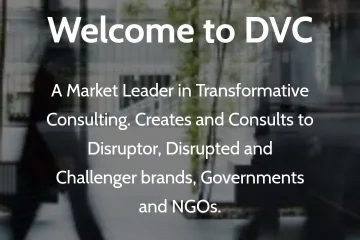In the dynamic landscape of technological evolution, integrating Generative AI into the creation of Technology Roadmaps is a strategic imperative within the LOAF GenAI 24 framework. This innovative approach optimizes the identification of synergies among diverse technologies. By analyzing data on emerging technologies, market demands, and competitor landscapes, L.O.A.F GenAI 24 harnesses the power of Generative AI to suggest inventive combinations and sequencing of technologies. This not only elevates the accuracy of roadmaps but ensures their adaptability to the ever-evolving needs of the market. Let’s delve into how this integration revolutionizes the roadmap creation process, paving the way for a dynamic and future-focused strategic vision.
So what’s the process and framework?
Building Technology Roadmaps with Generative AI:
A Technology Roadmap is a crucial strategic tool that outlines the development and integration of technologies within an organization. It serves as a guide, aligning technological advancements with business objectives. Generative AI, when seamlessly integrated, transforms the process of building these roadmaps, injecting a dynamic and forward-thinking approach. Here’s a detailed exploration of how Generative AI can be harnessed for constructing comprehensive and adaptive Technology Roadmaps:
1. Data Analysis and Trend Identification:
Generative AI excels in processing vast datasets, extracting meaningful patterns, and identifying emerging trends. When applied to building a Technology Roadmap, it analyzes data related to market trends, competitor landscapes, and technological advancements. This initial step ensures that the roadmap is rooted in a deep understanding of the current and future state of the industry.
2. Scenario Simulations and Predictions:
Generative AI’s ability to simulate scenarios becomes a powerful asset in roadmap creation. It can generate diverse scenarios based on various technological trajectories and market conditions. This simulation process aids in anticipating potential disruptions, assessing their impact, and crafting a roadmap that accommodates contingencies, providing a more robust and adaptive strategic plan.This is achieved in Stage 1 of the LOAF GenAI 24 process for
3. Identification of Synergies and Combinations:
One of the key strengths of Generative AI lies in its capacity to identify synergies among different technologies. By analyzing data on emerging technologies, market demands, and competitor strategies, the AI suggests innovative combinations and sequencing of technologies. This enhances the accuracy of the roadmap, ensuring that the selected technologies align with the organization’s goals and market needs.
4. Adaptability and Continuous Learning:
Generative AI is not static; it learns and evolves continuously. In the context of building a Technology Roadmap, this means that the AI adapts to changing market dynamics and technological landscapes. It incorporates real-time data, customer feedback, and market shifts, ensuring that the roadmap remains relevant and adaptable to evolving conditions. This iterative feedback loop is crucial for maintaining a roadmap’s effectiveness over time.
5. Innovation Catalyst:
Generative AI serves as a catalyst for innovation within the roadmap creation process. By generating ideas and potential solutions based on existing data, the AI contributes to ideation sessions. This infusion of innovative thinking ensures that the roadmap goes beyond conventional boundaries, fostering a culture of continuous innovation within the organization.
6. Risk Mitigation and Contingency Planning:
Generative AI can assist in identifying potential risks associated with selected technologies and suggest contingency plans. By analyzing legal and regulatory landscapes, the technology helps organizations proactively address compliance issues and mitigate risks. This proactive approach safeguards the roadmap against unforeseen challenges, contributing to the overall risk management strategy.
7. Personalization for Organizational Context:
Generative AI, when integrated into the roadmap creation process, considers the specific organizational context. It personalizes recommendations based on the organization’s goals, resources, and constraints. This ensures that the roadmap is not just a generic template but a tailored strategic plan that aligns with the unique characteristics of the organization.
8. Iterative Refinement and Optimization:
The AI-driven roadmap creation is an iterative process. Generative AI continuously refines strategies based on ongoing data analysis, market shifts, and technological advancements. This dynamic approach ensures that the roadmap is not a one-time document but an evolving strategic guide that reflects the organization’s commitment to staying at the forefront of technological advancements.
Conclusion:
Incorporating Generative AI into the process of building Technology Roadmaps transcends traditional approaches. It injects adaptability, innovation, and data-driven insights into the strategic planning process. As organizations navigate the complexities of technological landscapes, leveraging the capabilities of Generative AI ensures that their roadmaps not only anticipate future trends but actively shape and influence the trajectory of technological evolution.




0 Comments